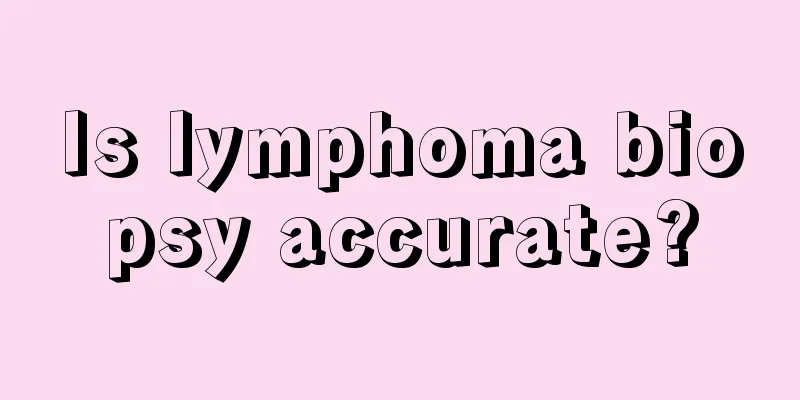What to do if hoarseness occurs in the early stage of laryngeal cancer

|
We all know the harm that laryngeal cancer brings to us, but in addition to the harm caused by laryngeal cancer itself, there are also complications caused by the disease, so we must pay attention to it. In life, many people often feel disgusted and afraid when they suffer from laryngeal cancer, because such a disease brings them too much pain and may take their lives. I believe that every patient and family member is paying attention to the treatment of laryngeal cancer. So how to quickly treat laryngeal cancer after it occurs! 1. Surgery It is the main means of treating laryngeal cancer. The principle of surgery is to first completely remove the tumor, and secondly to preserve or reconstruct the vocal and respiratory functions of the larynx as much as possible. (1) Partial laryngectomy is suitable for early, middle and some late-stage laryngeal cancer. There are many surgical methods, and the following may be adopted depending on the location and extent of the cancer: ① Laryngeal microscopic carbon dioxide laser surgery under supported laryngoscope; ② Laryngeal split vocal cord resection; ③ Vertical partial laryngectomy; ④ Prefrontal partial laryngectomy; ⑤ Horizontal supraglottic partial laryngectomy, also known as horizontal hemilaryngectomy; ⑥ Horizontal vertical partial laryngectomy, also known as 3/4 laryngectomy; ⑦ Subtotal laryngectomy or near-total laryngectomy; ⑧ Supracricoid partial laryngectomy. (2) Total laryngectomy is suitable for some mid-to-late stage laryngeal cancers, primary subglottic laryngeal cancers, recurrent laryngeal cancers, and hypopharyngeal cancers where preservation of the laryngeal structure is not clinically appropriate. (3) Methods for laryngeal function restoration after total laryngectomy include: tracheopharyngeal anastomosis, tracheoesophageal fistula, artificial larynx/electronic larynx, and esophageal voice method. Currently, only partial laryngeal function can be restored. (4) Neck dissection is used to treat the cervical lymph nodes. Depending on the primary site of the cancer and the presence of cervical lymph node metastasis, radical neck dissection, modified neck dissection, or sectional neck dissection can be performed. 2. Radiation therapy There are many radiation sources, including conventional radiotherapy, three-dimensional conformal radiotherapy, intensity modulated radiotherapy, etc. The total dose of radical radiotherapy is 60-70Gy. Applicable to: (1) Vocal cord cancer, unilateral and normal vocal cord activity; (2) supraglottic cancer with lesions smaller than 1 cm; (3) Those who are in poor general condition and not suitable for surgery; (4) If the lesion is extensive and has reached the pharynx, preoperative radiotherapy can be performed with a dose of 45 to 50 Gy within 4 weeks, and surgical treatment can be performed within 2 to 4 weeks after the completion of radiotherapy. (5) Postoperative radiotherapy: usually performed after the surgical incision has healed, and the dose of radiotherapy depends on the specific situation. 3. Traditional Chinese Medicine Treatment It is mainly to prepare for surgery, improve the patient's general condition and organ function, and facilitate surgical treatment. Most of them use qi-tonifying and blood-nourishing or spleen-tonifying qi-tonifying drugs such as Junzi Decoction, Bazhen Decoction, Baoyuan Decoction, Shiquan Dabu Decoction, etc., or adjust them in combination with TCM syndrome differentiation and treatment. Chinese medicine treatment is given in the short term after surgery to restore physical fitness and improve or alleviate certain adverse reactions after surgery, such as low fever, decreased appetite, abdominal distension, and constipation. Treatment usually gives Xiangsha Liujunzi Decoction to regulate the spleen and stomach, Yupingfeng Powder plus or minus to replenish qi and consolidate the exterior, and Zengye Decoction plus or minus to nourish yin and produce body fluid. Long-term application of Chinese medicine conditioning after surgery is to improve physical fitness and minimize and avoid the occurrence of recurrence and metastasis. The above article introduces some quick treatment methods for laryngeal cancer. We hope that understanding these treatment methods for laryngeal cancer can help our patients take correct treatment measures when they suffer from laryngeal cancer, avoid missing the best time for treatment, and strive to ensure that every laryngeal cancer patient receives correct treatment and recovers as soon as possible. |
<<: How to relieve the symptoms of advanced laryngeal cancer
>>: Can early stage nasopharyngeal cancer be cured?
Recommend
Signet ring cell carcinoma is a special type of gastric cancer
Gastric signet ring cell carcinoma accounts for a...
What are the methods for treating lung cancer? The treatment of lung cancer depends on these three situations
The treatment of lung cancer is basically the sam...
The nipple hurts when touched lightly
Sometimes some girls find that their nipples hurt...
What are the methods for making honey-soaked liquor
Have you ever heard of soaking honey in white win...
What causes tears and pain in the eyes
Under normal circumstances, the lacrimal glands i...
What are the early symptoms of benign bone tumors?
Tumors are very scary diseases for people because...
Are bladder cancer wounds contagious?
Nowadays, people's living standards have impr...
The efficacy of wolfberry and chrysanthemum soaked in water
The medicinal value of soaking wolfberry and chry...
Why is my urine yellow after taking the medicine
In daily life, because of the need for treatment ...
The most detailed introduction to ovarian cancer staging
Do you know the stages of ovarian cancer? In rece...
What is the reason for butthole hair
When summer comes, many women go to beauty salons...
What are the drugs for excreting uric acid
High uric acid has become another major killer th...
Which fruits contain vitamin C
Everyone knows that vitamin C is very good for ou...
What are the dangers of a small pulse pressure difference
Under normal circumstances, there is a certain di...
What are the dangers of melanoma
The early symptoms of melanoma are not very obvio...









